Oakes Field and Gym Complex
Introduction
Text-to-speech Audio
Images
The Charleston Ordnance Center (now South Charleston Industrial Park), which produced an immense amount of naval weaponry during WW2, towers over the bleachers and pressbox of Oakes Field.
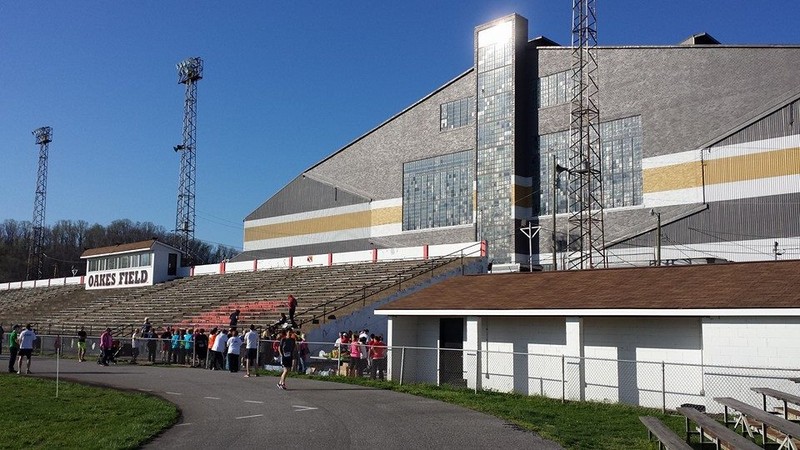
The entrance facade of the Oakes Field Gym, which houses the accompanying basketball court and support facilities. The Works Progress Administration constructed many such facilities around the country during the Great Depression.
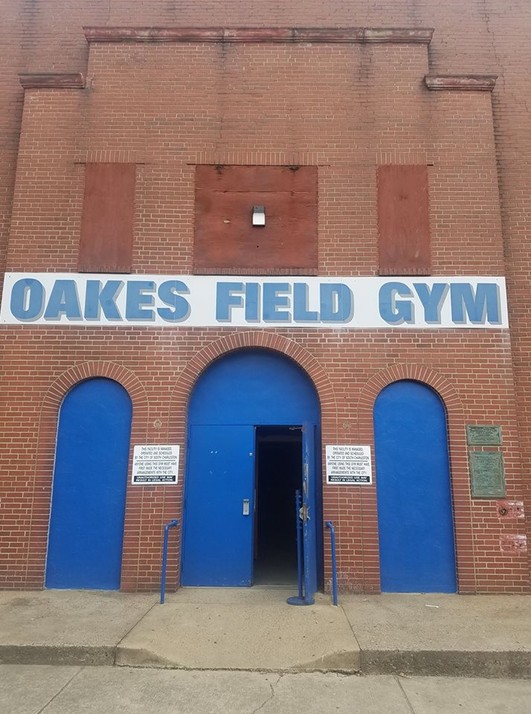
Test of the field's new night lighting in 1951. The community campaigned doggedly for the upgrade, as S, Charleston High was one of the last schools in the area that could not host games after dark. The Korean War caused the project delays.

Mayor L. Henry Oakes, for whom the field is named, served the city from 1930-1946. Born in 1873, he grew up in his family's log cabin--which would have been one of South Charleston's first buildings, built well before the city's founding.
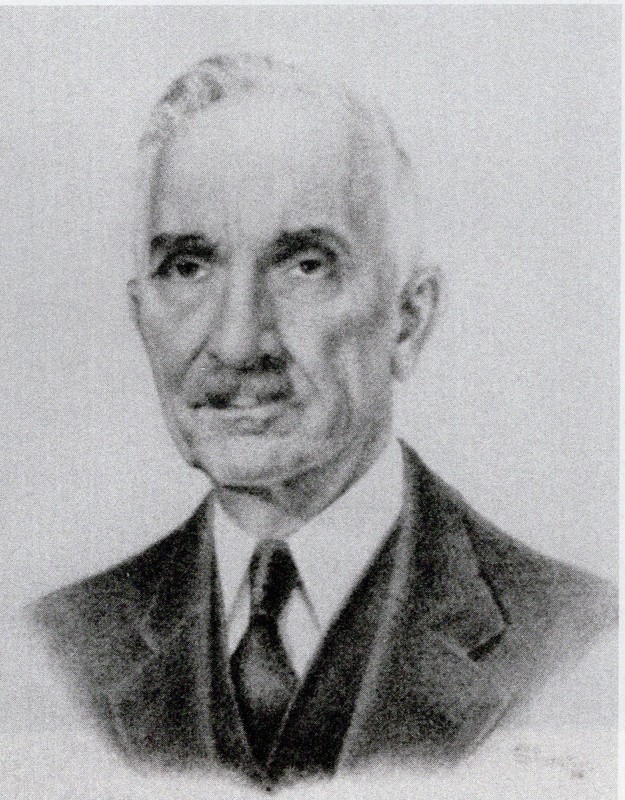
The neighboring Oakes Field Gymnasium being built in 1939, which preceded the construction of the field. The field occupies the space between the Gymnasium and the Charleston Naval Ordnance Center.
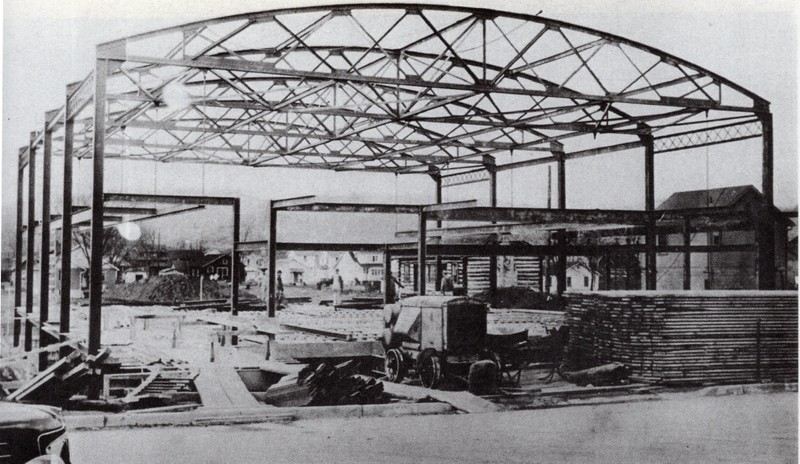
Pen-and-ink rendering of the Oakes Field Gymnasium and adjacent South Charleston Recreation Center. The Rec Center was sold when the new Community Center was built. The Rec Center was first converted into apartments, then later torn down.
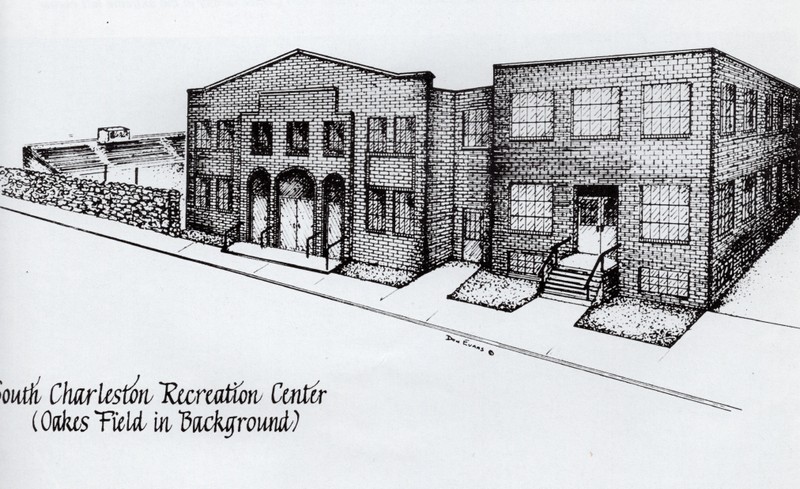
An aerial view of Oakes Field under construction (far left) circa 1941. Note that the Oakes Gymnasium has already been completed (center).
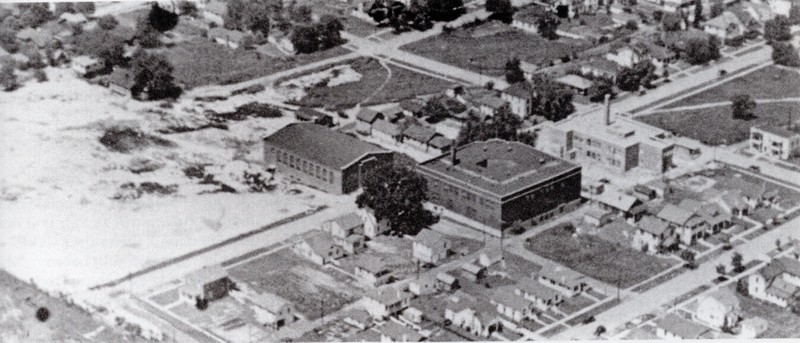
The Works Progress Administration (WPA) dedication plaque on the stone wall of Oakes Field. The WPA made many civic projects like this feasible during the Great Depression and World War 2. Photo by Bob Lilley.
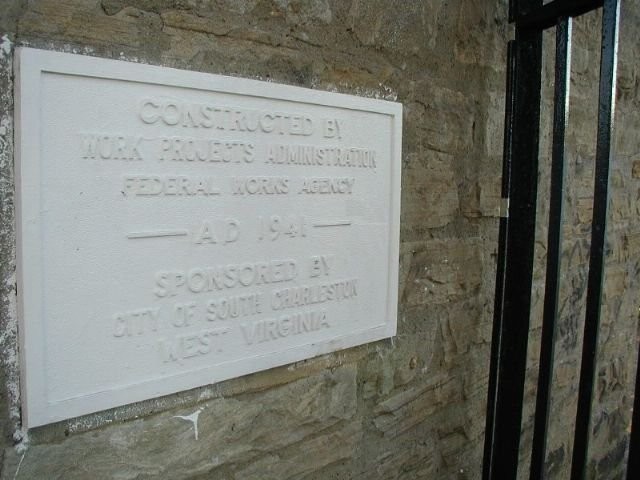
View down F Street of the stone wall and ticket booth at Oakes Field. The Charleston Ordnance Center at left, built weapons for the U.S. Navy while the field was under construction, as the U.S. entered WW2 in December 1941. Photo by Bob Lilley.
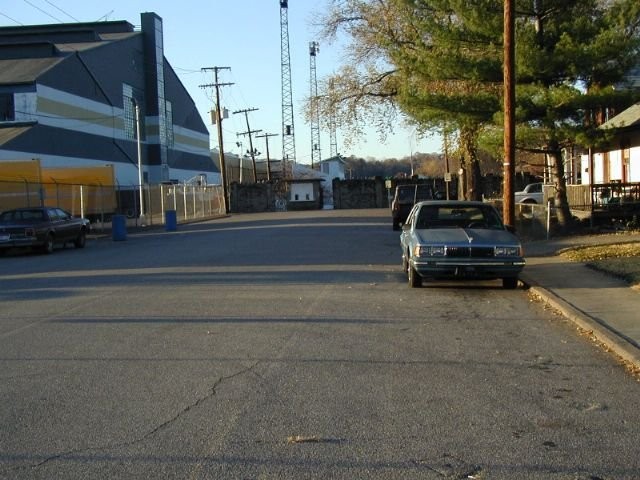
A closer view of the stone wall and ticket booth on F. Street, with the Charleston Ordnance Center in background. Photo by Bob Lilley.
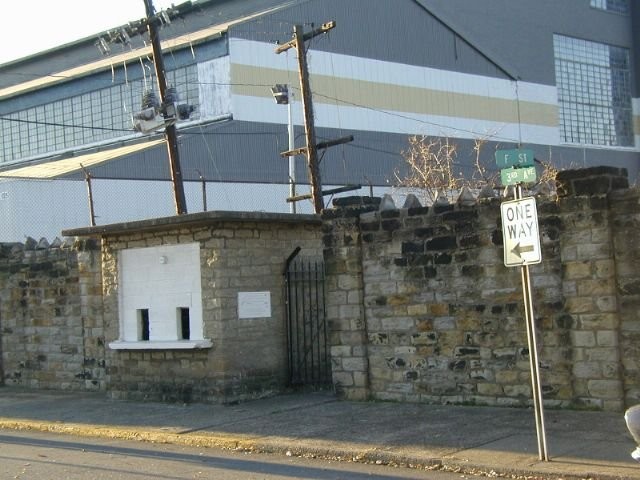
An interior view of the ticket booth. South Charleston High School's mascot, since before the field's construction, is the Black Eagle. Photo by Bob Lilley.
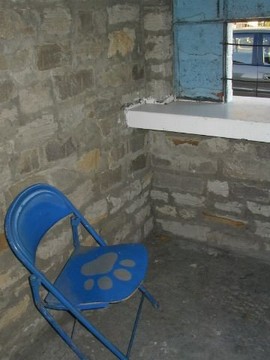
South Charleston Junior High School cheerleaders on the field in the 1940s, soon after the field was completed. Courtesy of South Charleston Museum.
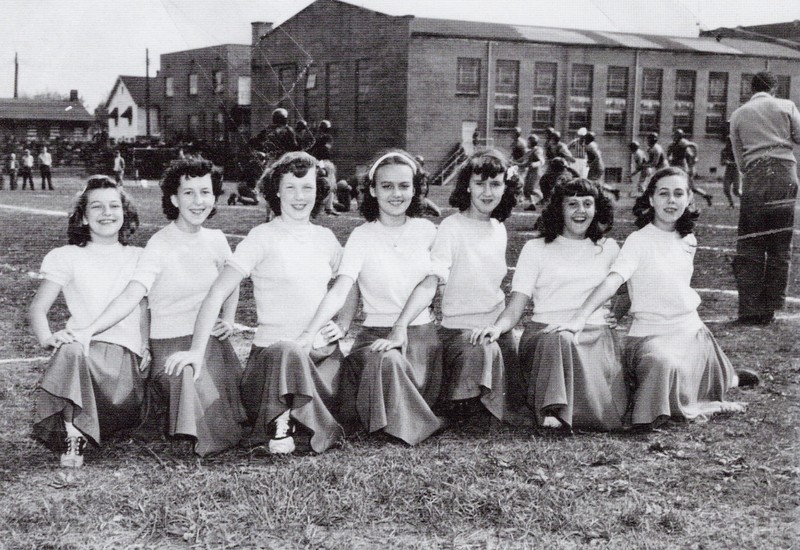
The South Charleston High School Band at Oakes Field in 1942. The field was only a year old, and the previous year SCHS's football team was undefeated for the first time. Courtesy of South Charleston Museum.
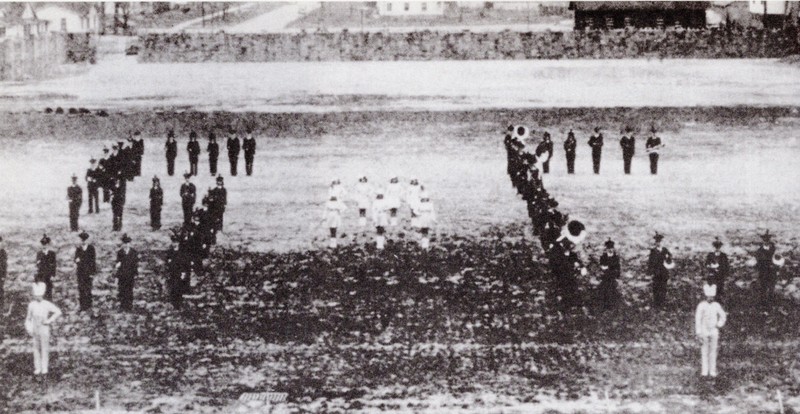
The South Charleston Junior High Golden Cubs football team. Note the lighting tower in the background--six such towers were Oakes Field's first major upgrade. Courtesy of South Charleston Museum.
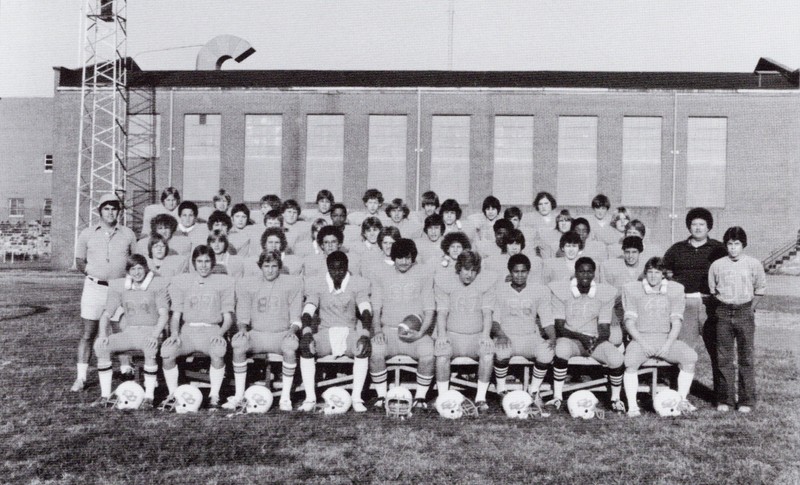
Backstory and Context
Text-to-speech Audio
The prayer for more localized educational facilities was answered in 1925 with the construction of Louden District High School. When the school's football team was born in 1926 under the tutelage of Coach Roy Price, however, the school lacked a football field on which to play; instead they drilled and played in an open field across MacCorkle Avenue from the massive Charleston Naval Ordnance Plant, which by then lay mostly dormant after the end of World War 1.
This state of affairs persisted even after the school changed its name to South Charleston High School in 1931. The town continued to grow through the Great Depression thanks to a burgeoning chemical industry--thus Mayor L.H. Oakes spearheaded a drive to partner with the Roosevelt presidency's Works Progress Administration (WPA) to construct South Charleston's first dedicated athletic complex. The WPA, a Federal organization designed to improve American infrastructure while creating jobs for those affected by the Depression, completed construction of the Oakes Field Gymnasium and adjacent South Charleston Recreation Center in 1939, and soon began clearing ground for Oakes Field itself, which would occupy the space between the Gymnasium and the Ordnance Center on 3rd Avenue.
The Gymnasium contains a basketball court and kitchen facilities, as well as the Oakes Field bathrooms. The Rec Center contained additional facilities and South Charleston's first public library, but as South Charleston expanded the city outgrew the Rec Center's capacity. A new library (which still serves the city today) was built a few blocks away in 1968, and the new massive Community Center was constructed in 1982 with prodigious athletic facilities. The WPA's old Rec Center was soon afterward sold and converted into residences, but later torn down.
The Gymnasium and Oakes Field have served the South Charleston community since 1941--and perhaps South Charleston High School's Black Eagles football team received a shot in the arm from the impending upgrade to their facilities, for the 1940-41 schoolyear was their first undefeated season. They would become West Virginia State Champions in 1945-46. All through World War 2, the Black Eagles practiced and played in the shadow of the Charleston Naval Ordnance Plant, which ran 7,400 workers in round-the-clock shifts producing weapons for U.S. Navy ships.
Though the Ordnance Plant shut down after World War 2 and was not reactivated during the Korean War, the marching bands, majorettes, cheerleaders and football players practicing at Oakes Field were once again greeted by the specter of war from 1962 to 1969, when FMC (Food Machinery Corporation) purchased the plant and produced M113 armored personnel carriers there, as the United States became increasingly entangled in Vietnam. From the top of the Oakes Field bleachers, students could look over the wall and witness the armored vehicles being tested on a new track behind the Ordnance Plant.
By 1970 the armored vehicles were gone--the Ordnace Center had sold again--and the high school was soon to depart as well, when they moved to a brand-new facility nearby in 1971. The venerable original high school became South Charleston Junior High, which continues to use Oakes Field for football and basketball. Much of the field remains at was originally constructed, including the original stone wall surrounding the complex.
The only major upgrade to the Oakes came in 1951, when local citizens campaigned relentlessly for funds and support to install night lighting at the stadium, as Oakes was "one of the few remaining high schools in the Valley whose football stadium is not lighted for night games." Their task of raising the necessary $18,000 for six lighting towers was complicated by the fact that, by 1951, the question had not been fully settled as to who held ownership of Oakes. Twice the issue had been taken to the West Virginia State Supreme Court by the Kanawha County Board of Education and the City of South Charleston, the two entities disputing the case. Though the final decision on the issue was "expected soon" in January 1951, the results are not publicly known today. Nevertheless, Oakes Field remains as an enduring testament to the lasting legacy of the WPA and the strength of the South Charleston community that has rallied around Oakes Field through the decades.
Sources
2. Connor, Charles. "Boosters Strive to Bring Night Football to S.C.." Charleston Daily Mail(Charleston), January 21, 1951.
